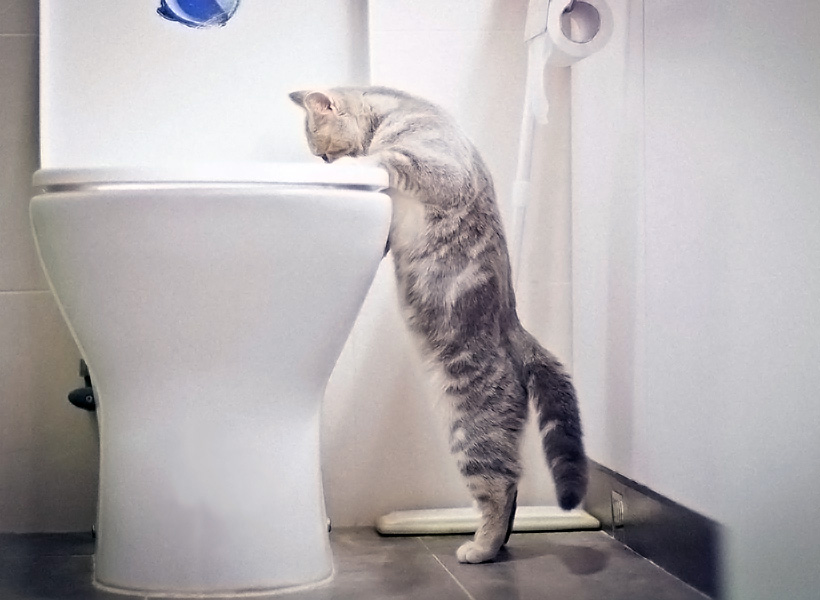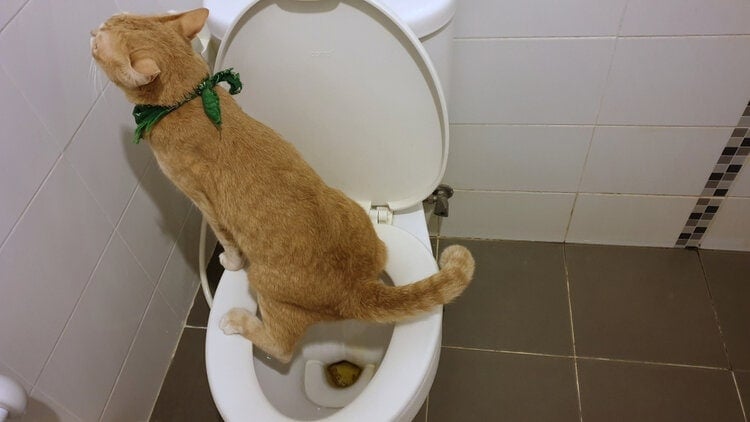Crucial Aspects Regarding Flushing Animal Waste Down the Toilet
Crucial Aspects Regarding Flushing Animal Waste Down the Toilet
Blog Article
Were you on the lookout for critical info involving 10 Things You Should Never Flush Down The Toilet?

When it involves throwing away waste, specifically animal waste, many individuals often consider the practical choice of flushing it down the commode. Nevertheless, this seemingly simple remedy can have major repercussions for the setting and public health. In this short article, we'll discover why flushing pet waste down the toilet is a bad concept and offer different approaches for appropriate disposal.
Introduction
Proper waste disposal is important for keeping environmental sustainability and public health. While it might seem safe to flush animal waste down the toilet, it can cause various issues, both for the environment and human wellness.
Threats of flushing animal waste
Ecological impact
Flushing animal waste introduces damaging germs and pathogens into rivers, which can negatively impact marine ecological communities. These pathogens can contaminate water resources and injury marine life, disrupting fragile ecological communities.
Public health worries
Animal waste contains unsafe germs such as E. coli and Salmonella, which can pose significant health threats to human beings. Flushing animal waste down the commode can contaminate water materials, causing the spread of illness and infections.
Alternatives to flushing
As opposed to purging pet waste down the toilet, there are several alternative disposal approaches that are more eco-friendly and hygienic.
Composting
Composting pet waste is an eco-friendly means to dispose of it. By composting, raw material is broken down right into nutrient-rich dirt, which can be used to fertilize gardens and plants.
Land fill disposal
Dealing with animal waste in a land fill is another option. While not as environmentally friendly as composting, it is a safer alternative to flushing, as it stops the contamination of water resources.
Family pet garbage disposal systems
There are customized pet waste disposal systems available that securely and hygienically deal with pet waste. These systems often use enzymes to break down waste and get rid of odors.
Actions to appropriate pet waste disposal
To guarantee proper disposal of animal waste, adhere to these steps:
Scooping and landing waste
Routinely scoop and bag animal waste making use of naturally degradable bags. This avoids waste from polluting the environment.
Using marked waste bins
Dispose of bagged animal waste in designated waste containers, such as garden compost bins or landfill containers. Stay clear of flushing it down the commode whatsoever prices.
Cleansing litter boxes and animal locations consistently
Regularly clean litter boxes and pet locations to prevent the accumulation of waste and bacteria. Usage pet-safe cleansing products to preserve health.
Advantages of proper disposal methods
Taking on appropriate disposal approaches for pet waste uses numerous advantages:
Minimized environmental pollution
Correct disposal methods decrease the threat of environmental pollution, safeguarding rivers and ecological communities from contamination
Decreased danger of water contamination.
By avoiding flushing pet waste down the commode, the threat of water contamination is dramatically reduced, safeguarding public health.
Enhanced sanitation and health
Correct disposal techniques promote far better sanitation and health, producing a more secure atmosphere for both humans and pets.
Final thought
Finally, flushing pet waste down the toilet is damaging to the atmosphere and public health. By taking on alternative disposal approaches and following appropriate waste monitoring practices, we can lessen the adverse impact of animal waste and contribute to a cleaner, much healthier planet.
What To Do With Dog Poo – The Do's And Don'ts Of Disposing Of Faeces
Dog poo bins
Some councils provide dedicated dog waste bins in popular dog-walking areas that can take dog poo that has been bagged but you can legally dispose of dog waste in any public litter bin, as long as it is securely bagged. This also applies to your wheelie bin at home.
Do not flush
Water companies do not recommend flushing dog faeces down the toilet because certain parasites can survive the water processing treatment and are potentially harmful to humans. You should also never consider flushing dog poo that has been bagged down the toilet as the bags will not break down and instead create severe blockages in the sewage system.
In the woods
The Forestry Commission promotes a ‘stick and flick’ method for dealing with waste in the woods. This means finding a stick and using it to flick any poo from off the path so that it is out of the way of other walkers. You could also bury it as long as it is not in an area where there might be livestock.
Livestock
Parasites found in dog poo can be transmitted to livestock if they inadvertently eat infected faeces that has been left on grazing land. This could result in the death of sheep or abortion in cattle so you should always make sure you pick up your dog’s waste in fields where livestock could be present.

Regularly clean litter boxes and pet locations to prevent the accumulation of waste and bacteria. Usage pet-safe cleansing products to preserve health.
Advantages of proper disposal methods
Taking on appropriate disposal approaches for pet waste uses numerous advantages:
Minimized environmental pollution
Correct disposal methods decrease the threat of environmental pollution, safeguarding rivers and ecological communities from contamination
Decreased danger of water contamination.
By avoiding flushing pet waste down the commode, the threat of water contamination is dramatically reduced, safeguarding public health.
Enhanced sanitation and health
Correct disposal techniques promote far better sanitation and health, producing a more secure atmosphere for both humans and pets.
Final thought
Finally, flushing pet waste down the toilet is damaging to the atmosphere and public health. By taking on alternative disposal approaches and following appropriate waste monitoring practices, we can lessen the adverse impact of animal waste and contribute to a cleaner, much healthier planet.
What To Do With Dog Poo – The Do's And Don'ts Of Disposing Of Faeces
Dog poo bins
Some councils provide dedicated dog waste bins in popular dog-walking areas that can take dog poo that has been bagged but you can legally dispose of dog waste in any public litter bin, as long as it is securely bagged. This also applies to your wheelie bin at home.
Do not flush
Water companies do not recommend flushing dog faeces down the toilet because certain parasites can survive the water processing treatment and are potentially harmful to humans. You should also never consider flushing dog poo that has been bagged down the toilet as the bags will not break down and instead create severe blockages in the sewage system.
In the woods
The Forestry Commission promotes a ‘stick and flick’ method for dealing with waste in the woods. This means finding a stick and using it to flick any poo from off the path so that it is out of the way of other walkers. You could also bury it as long as it is not in an area where there might be livestock.
Livestock
Parasites found in dog poo can be transmitted to livestock if they inadvertently eat infected faeces that has been left on grazing land. This could result in the death of sheep or abortion in cattle so you should always make sure you pick up your dog’s waste in fields where livestock could be present.

We had been made aware of that editorial on Can You Flush Dog and Cat Poo Down the Toilet? from a buddy on a different site. Don't hesitate to pause to promote this blog if you enjoyed reading it. Thanks a lot for taking the time to read it.
Call Today Report this page